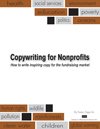Today in Seth Godin’s blog, Accept all substitutes, he points out the folly of driving people to competitor’s sites.
One of Godin’s examples was news websites. They drive readers to free sites by requiring payment. And it is very easy to find a substitute for paid news.
His point was that the Internet has increased the number of available substitutes and made them more accessible. Godin ended by saying, “That means you have to work far harder to create work that can’t easily be replaced.”
How easy is it for donors to find substitutes for what your charity does?
I’m betting it’s quite easy. There are very few charities that are truly unique. Not only that but search engines and sites like GuideStar make it easy to find charities with similar missions.
What drives donors to choose a substitute for your charity? What drives them to give generously to someone else?
Read the list below carefully. If your charity is guilty of any of this then you’re driving donors to your competitors. You’re driving them to give to a charity other than yours.
- Us, us, wow look at us. See how great we are and all the wondrous things we’ve done. (Self-centered messages like this drive supporters away – both online and offline.)
- It’s obvious what we do. Why should we spell it out?
- We don’t want to give donors choices on how they give. It’s easiest for us if we only allow credit card payments.
- Our website is organized based on how our charity is organized. We don’t worry about usability.
- We don’t want donors calling and emailing us all the time. We have too much work to do raising funds and executing our mission. That’s why we only have a “contact form” on our website.
- Donor cultivation is satisfied by sending a thank you letter within a month or so of receiving the donation.
- We leverage our content by taking our direct mail letters and precisely duplicating them in our emails and on the website. It was a great letter so it will work just as well everywhere else without editing.
- Every communication includes a hard ask for a gift.
- That’s not jargon! Those terms are relevant to our work. Donors need to get smarter.
- The need to give to our charity is obvious. We don’t need to spell everything out and write all those stories.
That’s not an exhaustive list. But hopefully you get the idea on what NOT to do.
Conversely . . . To attract and retain loyal donors you must do more than the bare minimum. You must give them an exceptional experience. You must communicate with them as they wish. Give choices. Make everything easy for your supporters. Show how they make a difference. Appreciate each person as an individual.
If you don’t, your donors will easily find a substitute charity that does all this and probably more. As Godin says, “You need to work far harder…” to give donors and supporters an exceptional experience “…that can’t easily be replaced.”

{ 5 trackbacks }
{ 0 comments… add one now }